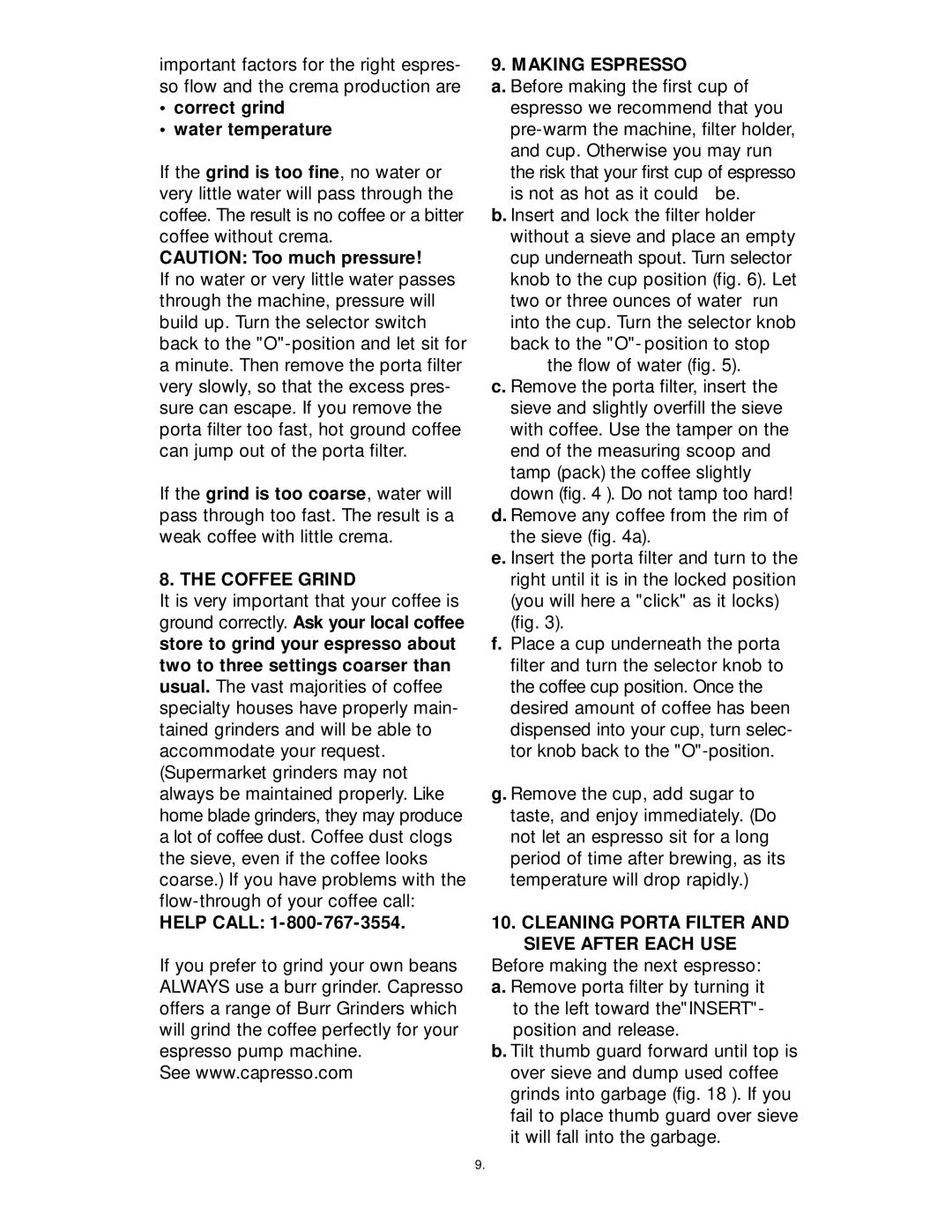important factors for the right espres- so flow and the crema production are
•correct grind
•water temperature
If the grind is too fine, no water or very little water will pass through the coffee. The result is no coffee or a bitter coffee without crema.
CAUTION: Too much pressure!
If no water or very little water passes through the machine, pressure will build up. Turn the selector switch back to the
If the grind is too coarse, water will pass through too fast. The result is a weak coffee with little crema.
8. THE COFFEE GRIND
It is very important that your coffee is ground correctly. Ask your local coffee store to grind your espresso about two to three settings coarser than usual. The vast majorities of coffee specialty houses have properly main- tained grinders and will be able to accommodate your request. (Supermarket grinders may not always be maintained properly. Like home blade grinders, they may produce a lot of coffee dust. Coffee dust clogs the sieve, even if the coffee looks coarse.) If you have problems with the
HELP CALL: 1-800-767-3554.
If you prefer to grind your own beans ALWAYS use a burr grinder. Capresso offers a range of Burr Grinders which will grind the coffee perfectly for your espresso pump machine.
See www.capresso.com
9. MAKING ESPRESSO
a. Before making the first cup of espresso we recommend that you
b. Insert and lock the filter holder without a sieve and place an empty cup underneath spout. Turn selector knob to the cup position (fig. 6). Let two or three ounces of water run into the cup. Turn the selector knob back to the "O"- position to stop
the flow of water (fig. 5).
c. Remove the porta filter, insert the sieve and slightly overfill the sieve with coffee. Use the tamper on the end of the measuring scoop and tamp (pack) the coffee slightly down (fig. 4 ). Do not tamp too hard!
d. Remove any coffee from the rim of the sieve (fig. 4a).
e. Insert the porta filter and turn to the right until it is in the locked position (you will here a "click" as it locks)
(fig. 3).
f.Place a cup underneath the porta filter and turn the selector knob to the coffee cup position. Once the desired amount of coffee has been dispensed into your cup, turn selec- tor knob back to the
g.Remove the cup, add sugar to taste, and enjoy immediately. (Do not let an espresso sit for a long period of time after brewing, as its temperature will drop rapidly.)
10. CLEANING PORTA FILTER AND SIEVE AFTER EACH USE
Before making the next espresso: a. Remove porta filter by turning it to the left toward the"INSERT"-
position and release.
b. Tilt thumb guard forward until top is
over sieve and dump used coffee grinds into garbage (fig. 18 ). If you fail to place thumb guard over sieve it will fall into the garbage.
9.
